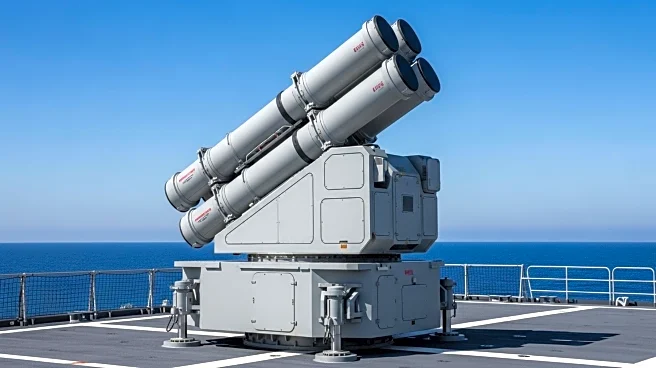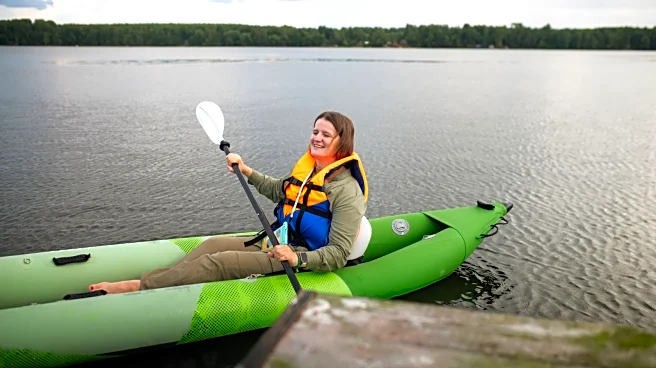What is the story about?
What's Happening?
The NATO SeaSparrow Consortium, led by the United States, is initiating the design and development of a new variant of the RIM-162 Evolved SeaSparrow Missile (ESSM). This development follows the current ESSM Block 2, which achieved initial operational capability with the US Navy in December 2021. The consortium, comprising 12 countries including Australia, Belgium, Canada, Denmark, Germany, Greece, the Netherlands, Norway, Portugal, Spain, Türkiye, and the United States, is working with a multinational industry team led by Raytheon. The new variant, referred to as the Next Significant Variant (NSV), aims to enhance operational techniques and technical capabilities. The ESSM Block 2 introduced a dual-mode active/semi-active X-band radar seeker, increasing the missile's diameter and improving its guidance and control systems.
Why It's Important?
The development of a new ESSM variant is significant for enhancing naval defense capabilities among NATO member countries. The upgraded missile will likely provide improved self-defense options for naval vessels, potentially increasing their ability to counter threats. This initiative reflects ongoing efforts to maintain technological superiority in missile defense systems, which is crucial for national security and deterrence strategies. The collaboration among 12 countries underscores the importance of multinational cooperation in defense technology development, which can lead to shared advancements and cost efficiencies.
What's Next?
The NATO SeaSparrow Consortium is expected to outline specific requirements and operational techniques for the new missile variant in upcoming briefings. Industry partners will likely be engaged to contribute to the design and development process, ensuring the new variant meets the strategic needs of the consortium members. The focus will be on integrating advanced technologies to enhance the missile's capabilities, with potential implications for future naval defense strategies.
AI Generated Content
Do you find this article useful?


















